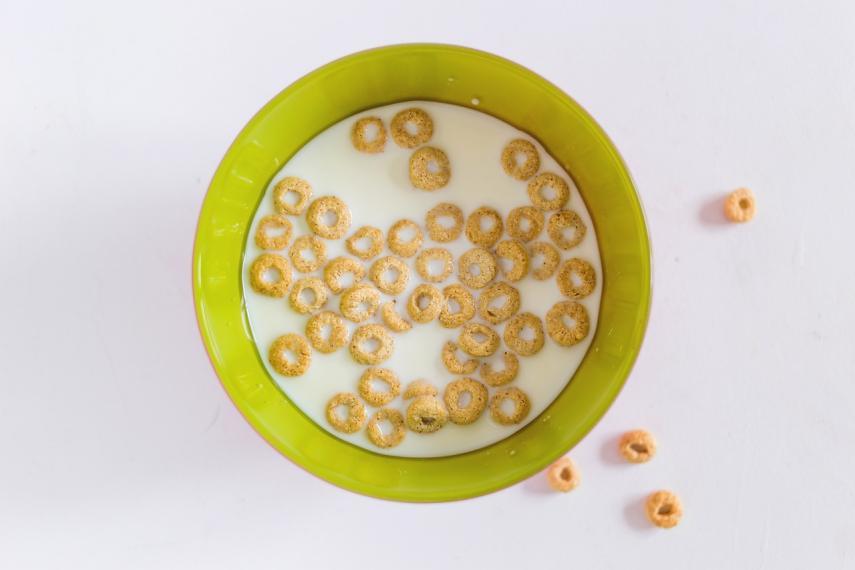Exploring the Benefits of Cow’s Milk and Breakfast Cereal: What’s for Breakfast?

Obesity and Type 2 Diabetes are rapidly increasing public health concerns that decrease quality of life and burden the healthcare system. To combat these ramifications, researchers are exploring dietary strategies to reduce the risk and manage metabolic diseases. One dietary strategy is finding ways to lessen blood sugar levels after eating a meal. Another is lowering feelings of appetite after eating, potentially delaying the next meal or resulting in eating less at the next meal, with specific consideration for foods and ingredients that might have these effects.
Consuming cow’s milk with carbohydrates is known to minimize the rise in blood sugar after a meal compared to consuming carbohydrates alone. This effect has been explained by the proteins in cow’s milk, specifically casein and whey. Casein and whey proteins have different structural and physiological properties that affect the rate of digestion and subsequent feelings of fullness and food intake (1). Interestingly, the ratio of casein-to-whey in milk differs depending on the species; human milk contains a 40:60 ratio, and cow milk contains an 80:20 ratio. Cow’s milk contains a higher overall protein content than human milk. Previous evidence demonstrated that daily protein intake should be equally spread over three meals, indicating a greater need to include protein-rich foods in a breakfast meal.
A recent study the HNRU collaborated on investigated the effect of cow milk formulations with altered amounts and proportions of whey and casein proteins, consumed with a typical bowl of high-carbohydrate breakfast cereal, on blood sugar response, along with feelings of fullness and subsequent lunch intake in 32 healthy young adults (2). The HNRU partnered with the Department of Food Science (H. D. Goff) and the University of Toronto (G.H. Anderson) to pursue this double-blinded, controlled, crossover random study design. Each participant randomly consumed one of the five breakfast treatments combined with cereal at each study visit in the HNRU. Researchers measured participant's blood sugar changes from baseline (fasted), along with appetite and fullness ratings at pre-lunch and post-lunch. Food intake at the lunch meal was also measured.
Milk treatments consumed with cereal were found to reduce the rise in blood sugar after the breakfast meal compared to the water control. Cow’s milk with an increased protein concentration and 80:20 ratio also reduced the rise in blood sugar and appetite after the lunch meal compared to typical cow’s milk. These results support that consuming typical cow’s milk as part of a high-carbohydrate meal can reduce the blood sugar response after breakfast and lunch. There was no difference in food intake at the lunch meal between any of the treatments, although increased whey protein consumption at the breakfast meal did reduce feelings of appetite after lunch (i.e. participant post-lunch ratings indicated they were fuller).
“Our observations from this study showed that milk products enhanced with additional whey protein seems to provide the dietary strategy recommendation to manage blood glucose and postprandial appetite,” says Bonnie Kung Ph.D., who was the lead student study coordinator for the work. Since graduating from the University of Guelph, Bonnie continues to work with the University of Toronto team researching dairy and long-term strategies for blood glucose, body weight and appetite. The HNRU was proud to partner on this collaborative project, the results of which rationalize further research to explore protein-based strategies that help in weight management and lower the risk of developing Type 2 Diabetes.
Works Cited:
1) Akhavan T, Panahi S, Anderson GH, Luhovyy BL. Application of dairy-derived ingredients in food intake and metabolic regulation. In: Corredig M, editor. Dairy-Derived Ingredients: Food and Nutraceutical Uses. Cambridge: Woodhead Publishing Ltd.; 2009. p. 212.
2) Kung B, Anderson GH, Pare S, Tucker AJ, Vien S, Wright AJ, Goff HD. Effect of milk protein intake and casein-to-whey ratio in breakfast meals on postprandial glucose, satiey ratings and subsequent meal intake. Journal of Dairy Science, vol. 101, no. 10, 20 Aug. 2018, pp. 8688-8701., doi:10.3168/jds.2018-14419.